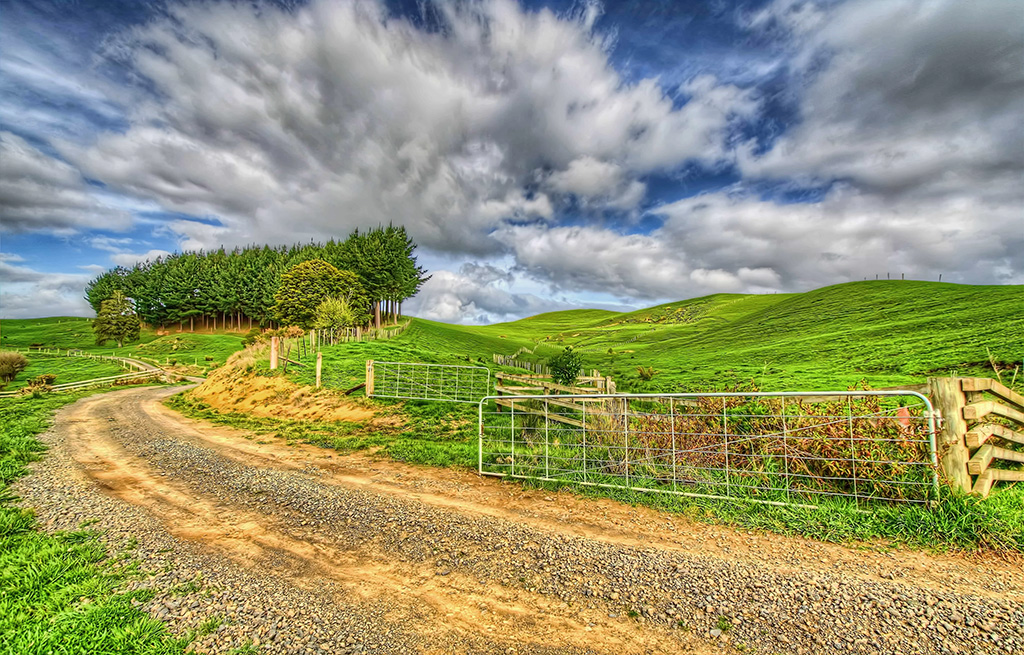Harker Reserve
This picture is a test-bed for several new processing techniques I’ve been trying, which I will explain later.
It’s the southern entrance to the Harker Reserve. This is a native bush reserve along the Waikato river.
To start with the basic HDR was made using Photomatix (of course). This was followed by some enhancement using Topaz Adjust.
I then used a new technique to blur the clouds using the kind of effect that’s much used by Trey Ratcliff (he calls it a Treyburst). I’ve only used a fairly mild version; I did this using the Photoshop Radial Blur filter. To do this you first mask off anything that’s not sky. You then apply radial blur, selecting the blur method as zoom. If the effect is too strong you can reduce the layer opacity (you did this on a duplicate layer, right?). I don’t know if this is how Trey does it, but it seems to produce a similar effect.
The next set of new techniques I used are Tony Kuyper’s Luminosity and Saturation masks, which are described on his website.
These are a selection of clever techniques that let you creatively and selectively adjust the brightness, contrast and saturation in an image. Best if you read it on his site rather than me trying to explain it. I’m not sure I’m using his tools in the best manner yet. I’m probably over-doing it somewhat. But I hope to learn how to drive these more in future.
But the basic idea is that you can target, for instance, the lighter parts of the image and apply an adjustment to just those parts. Or more accurately, predominately those parts (as one of the clever aspects of the technique is that the adjustment is “self feathering” so it does not produce any abrupt boundaries). Similarly you can increase the saturation of the least saturated parts of the image, leaving the more saturated parts the same.
Comments are closed.
